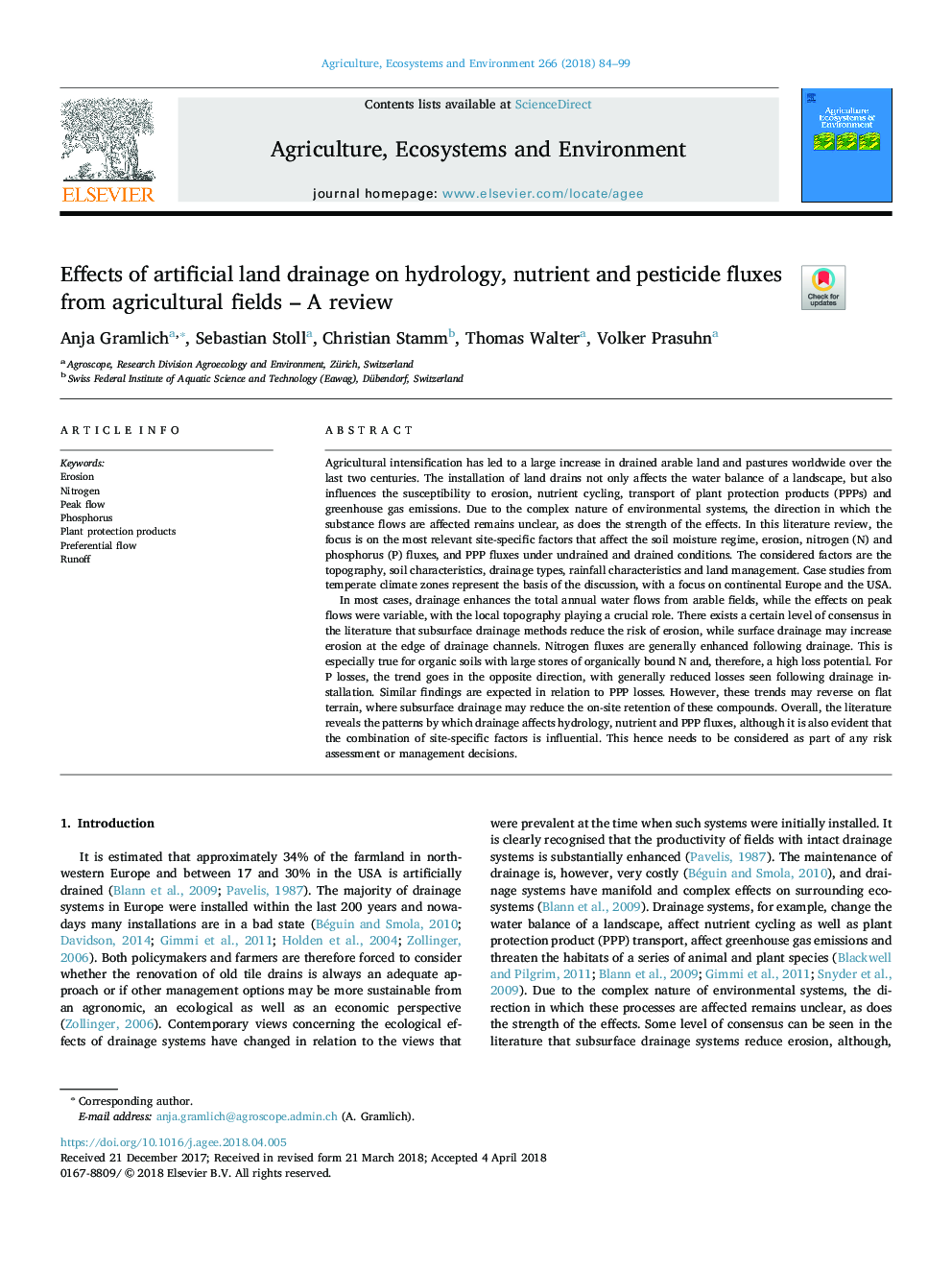| Article ID | Journal | Published Year | Pages | File Type |
|---|---|---|---|---|
| 8486945 | Agriculture, Ecosystems & Environment | 2018 | 16 Pages |
Abstract
In most cases, drainage enhances the total annual water flows from arable fields, while the effects on peak flows were variable, with the local topography playing a crucial role. There exists a certain level of consensus in the literature that subsurface drainage methods reduce the risk of erosion, while surface drainage may increase erosion at the edge of drainage channels. Nitrogen fluxes are generally enhanced following drainage. This is especially true for organic soils with large stores of organically bound N and, therefore, a high loss potential. For P losses, the trend goes in the opposite direction, with generally reduced losses seen following drainage installation. Similar findings are expected in relation to PPP losses. However, these trends may reverse on flat terrain, where subsurface drainage may reduce the on-site retention of these compounds. Overall, the literature reveals the patterns by which drainage affects hydrology, nutrient and PPP fluxes, although it is also evident that the combination of site-specific factors is influential. This hence needs to be considered as part of any risk assessment or management decisions.
Related Topics
Life Sciences
Agricultural and Biological Sciences
Agronomy and Crop Science
Authors
Anja Gramlich, Sebastian Stoll, Christian Stamm, Thomas Walter, Volker Prasuhn,
